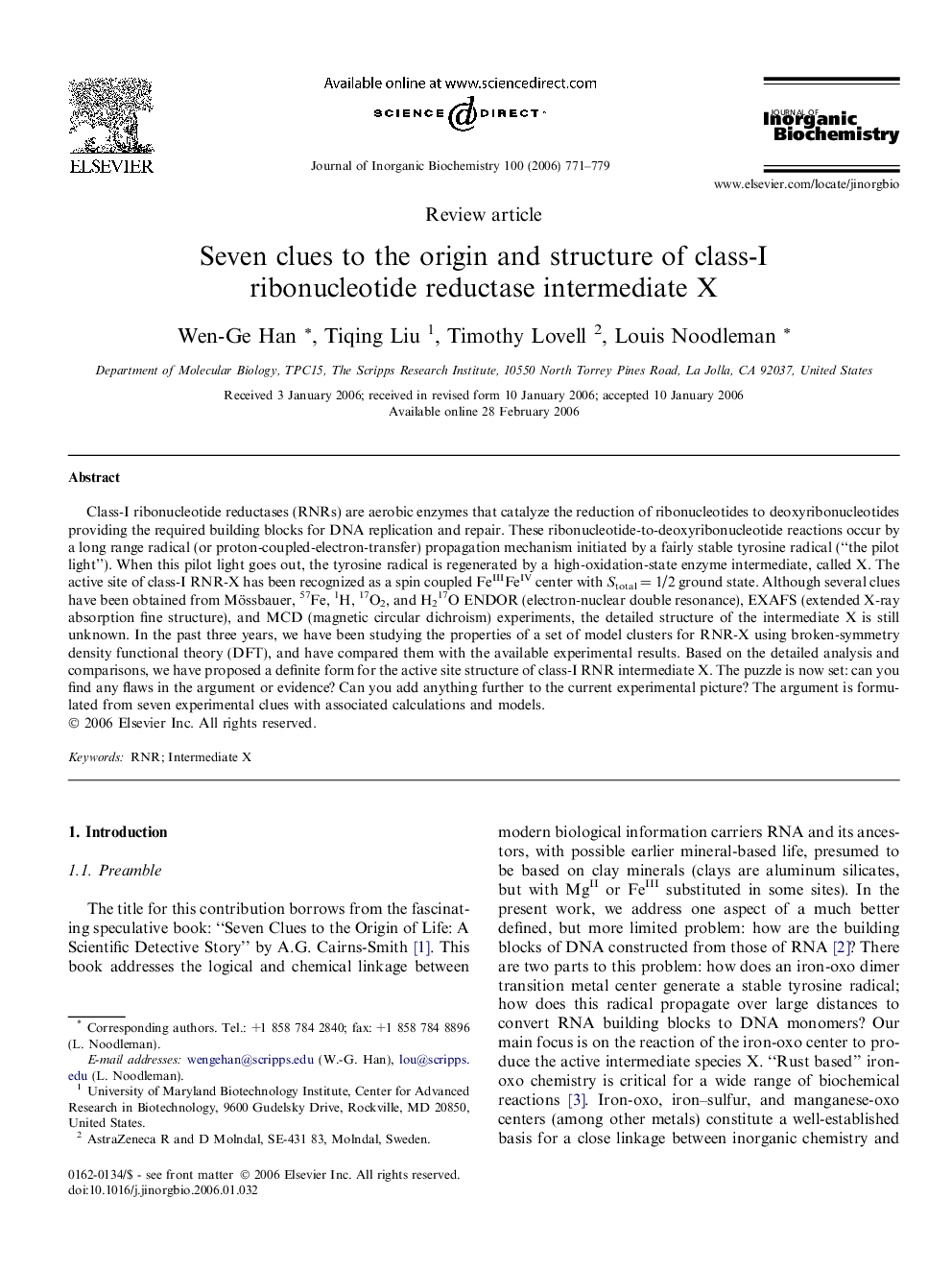| Article ID | Journal | Published Year | Pages | File Type |
|---|---|---|---|---|
| 1317661 | Journal of Inorganic Biochemistry | 2006 | 9 Pages |
Class-I ribonucleotide reductases (RNRs) are aerobic enzymes that catalyze the reduction of ribonucleotides to deoxyribonucleotides providing the required building blocks for DNA replication and repair. These ribonucleotide-to-deoxyribonucleotide reactions occur by a long range radical (or proton-coupled-electron-transfer) propagation mechanism initiated by a fairly stable tyrosine radical (“the pilot light”). When this pilot light goes out, the tyrosine radical is regenerated by a high-oxidation-state enzyme intermediate, called X. The active site of class-I RNR-X has been recognized as a spin coupled FeIIIFeIV center with Stotal = 1/2 ground state. Although several clues have been obtained from Mössbauer, 57Fe, 1H, 17O2, and H217O ENDOR (electron-nuclear double resonance), EXAFS (extended X-ray absorption fine structure), and MCD (magnetic circular dichroism) experiments, the detailed structure of the intermediate X is still unknown. In the past three years, we have been studying the properties of a set of model clusters for RNR-X using broken-symmetry density functional theory (DFT), and have compared them with the available experimental results. Based on the detailed analysis and comparisons, we have proposed a definite form for the active site structure of class-I RNR intermediate X. The puzzle is now set: can you find any flaws in the argument or evidence? Can you add anything further to the current experimental picture? The argument is formulated from seven experimental clues with associated calculations and models.
